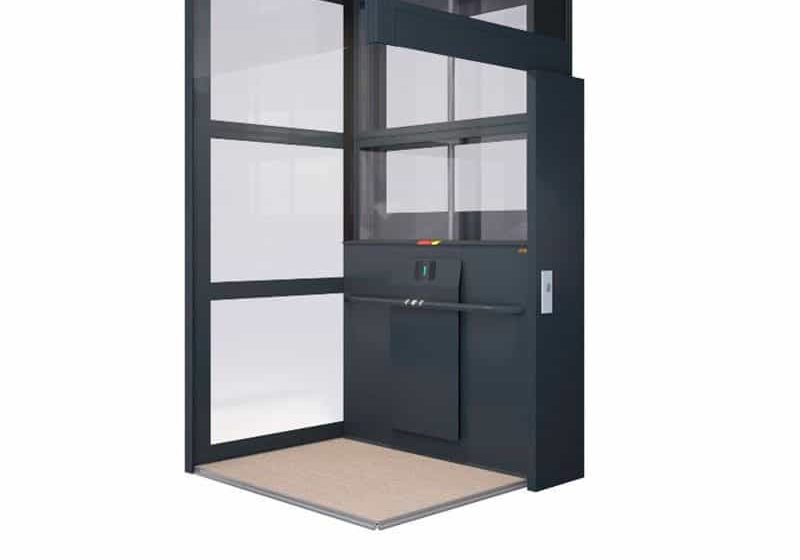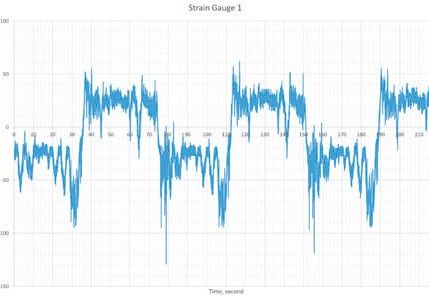Clients may not be paying as much attention to design and construction as one might think.
In most people’s minds, when they hear the word “cabs,” their thoughts probably turn to car finishes. Given that finishes are what people see and to which clients attach a huge level of importance, you can be forgiven for thinking this is the case. But, how much attention is paid to the cab design and construction itself?
With the majority of lift demand sitting within the low- to mid-range sector, and manufacturers offering a wide range of car finish options, the finishes available form an integral part of the manufacturers’ own car design and construction. This obviously works well and, in most cases, fits with the requirements and expectations of the customer.
However, this isn’t always the case at the higher end of both the commercial and residential market. In these markets, bespoke finishes are an integral and important part of the building’s architecture. It is here that the “three L’s” — lifts, lobbies and loos — take on greater importance, as developers and architects seek to align the car and lobby appearance as a way to make a statement about the building and what it represents for potential tenants. Not only is this a key factor in architectural terms, but also forms a significant part of the building’s marketing strategy. Although high-level bespoke finishes occupy a small segment of the market, it is a significant one in terms of prestige and flagship projects.
On both major commercial and high-end residential projects, it is increasingly possible to have a mixture of
“traditional” and machine-room-less (MRL) equipment serving the building. MRLs bring widely recognised benefits, and this segment of the market is highly competitive among manufacturers who offer dimensional flexibility and an
ever-widening range of configuration and finishes options. One of the major limitations of MRLs and bespoke interiors is the restriction placed on the weight of applied finishes. This does represent something of a barrier, but the commercial and structural advantages of MRLs generally outweigh the need for compromise in terms of appearance or the materials used for the car interior.
Value Engineering
The move to model lifts and MRLs has brought with it high levels of value engineering, reduction in material thickness and lighter-weight operating equipment, such as door operators and car doors. While this brings benefits in terms of reduced weight, smaller machines, lower power requirements and reduced costs, there are downsides. The flexibility to apply bespoke finishes to a standard product brings challenges and inevitable compromises, and it is an area where the industry is, generally, less accommodating as the move to pre-engineered solutions continues to expand and is firmly targeting the lift industry’s upper market (speeds of 3.5 m/s and loads up to 2000 kg). It is this segment of the market where bespoke finishes become the norm rather than the exception, and close attention to the design of the basic car becomes necessary.
Naturally, the manufacturer tries to promote the use of standard cars on the basis of cost, and this is where a lack of understanding of the “bare car” design can be fraught with difficulties. I suspect in most cases the client team will not question the basic enclosure design, given that car drawings may be issued at tender and are expected to be followed. However, in many instances at the time of tender, the lobby and car finish designs have not been finalised though provisional sums have been allocated. This may sound like a reasonable approach, but the major flaw is that the manufacturer has based the tender price on providing a standard bare car which may not accommodate the architectural design envisaged. This is where architectural aspiration meets engineering reality, and something has to give. In these circumstances, the contractor may offer to provide modified car enclosures but at additional cost and often with penalties in terms of the programme, something the main contractor will almost certainly be reluctant to accept.
Understand the Bare Car
It is necessary to have a thorough understanding of the bare car design from the outset, especially if the finishes design hasn’t been established at the time of contract award. Understanding the location of ventilation holes, sometimes at the bottom of the car front reveals or side wall panels, and their relationship to low level skirting and ceiling friezes is a key factor. Does the car fan position meet with the ceiling design? Is a ceiling hatch needed (remembering some manufacturers have a requirement with MRLs to access the car top from inside the car for maintenance and engineers escape purposes)? How does the lighting design work with the fan and hatch locations? Can a service cabinet or media screen be accommodated in the location you want?
The rigidity of wall and ceiling panels and their ability to support the loads without distortion, especially if inflexible materials such as glass or laminated stone are applied, is a key requirement. The means of mounting finishes to the car walls and ceiling needs to be understood, and interface details established. Can wall panels easily be replaced in the event of damage? Can the car flooring arrangement accommodate the finishes (a critical point, given a floor pan of up to 50 mm may be required to fit 25- to 30-mm-thick stone)? How does the design of the MRL finishes compare with those of traditional lifts with the same design intent?
Placing Limitations
All these points can place limitations on the finishes design driven by the bare car arrangement, rather than the client’s or architect’s aspirations. As is commonly the case, it is not until the car drawings and material details are issued that these limitations become apparent, driven by a failure to understand exactly what is being offered by the manufacturer at an early stage of the design process. The outcome is disappointment on the part of both the architect and the client when an expensive finishes design is compromised. The result invariably leads to neither party being satisfied with the modified solution, which can sometimes give the appearance of being something of a “mistake.”
Moving beyond the need to understand the bare car design, another key question regarding bespoke finishes is, where are they manufactured? It was common for major suppliers to offer factory-fitted finishes where a great deal of experience and knowledge of the product led to high-quality production. However, as global manufacturing has widened with different components being made in various factories around the world, the tendency is for finishes to be made and applied locally. The approach taken is that the cars are manufactured overseas and the finishes are designed and made locally. In many instances for design, manufacture and inspection purposes, a timber replica of the car is built and the prototype finishes are fitted. However, even in this process, the design of the bare car isn’t always fully coordinated, resulting in site modifications being needed to overcome clashes and rectify non-aligning interfaces.
Assembly Tolerances
One consistent and significant issue is the assembly and alignment of the car itself. Bare cars have manufacturing and assembly tolerances, and it is often the case that when built onsite, the cars are not square, but out of plumb and twisted. This represents a real challenge to the finish installers who find that panels don’t fit, shadow gaps disappear or become excessive and alignment between adjacent panels is a struggle. This can lead to panels having to be remade and compromises offered as the lift contractor is confronted with slowing progress, often at a critical point in the installation programme. Multiply the problem by the number of cabs with special finishes and it amounts to a significant problem — even more so, if the lift contractor is engaged in a contractual dispute with the supplier. Factor in the limited resource in terms of car finishing contractors, especially installation fitters, and it is easy to see that bespoke finishes can be an area fraught with difficulties and significant challenges.
When looking at model car finishes provided by the manufacturer, we are confronted with a different situation. The value engineering and lightweight construction of cars often combine to create the impression of a product that can be improved.
We do appear to have reached a point where car enclosures lack rigidity and are perceived as flimsy, tinny and lacking robustness, and while standard finishes provided by the manufacturer may look good, they lack the “feel” of a more traditional enclosure. Attention to improved panel reinforcement and better sound-deadening materials would go a long way in resolving much of the frequently perceived shortcomings. This, together with added stiffening to ceiling panels and the provision of lightweight top-of-car walk boards — especially if the ceiling design includes an access hatch — would all mark a significant improvement.
‘U.K. Spec’
It is appreciated that, from a global perspective, the U.K. market makes up a small percentage of the total output but, with the management emphasis now on “agility” and
“flexibility,” it cannot be beyond the ability of suppliers to have a “U.K. spec” design that addresses the fundamental issues that are a persistent source of irritation and debate within the domestic market. Yes, the U.K. is different from the rest of Europe, a factor few on the continent really appreciate, and many would argue that the U.K. is a more knowledgeable and sophisticated market that needs to be recognised and suitably serviced. The reality, though, is that this argument will receive little recognition at world/European HQ, where the drive is focused on widening the market for MRLs and cost and competitiveness will be the key factors at play. This is a great shame, because with a little effort and ingenuity, so much more could be achieved. Given the reluctance of the U.S. to adopt MRLs, it would be interesting to see if manufacturers would look to change their design criteria, should the product gain greater acceptance in that particular market.
With the MRL range now moving into speeds of 3.5 m/s, one of the key criteria is ride quality. It is noticeable that with these higher speeds come qualifications of ride comfort both in terms of noise and vibration. The lightweight construction of the cars, even with bespoke finishes, small-diameter roller guides for both the car and counterweight — together with the retention by some manufacturers of underslung cars — has resulted in compromises when it comes to ride quality. Lower levels of system mass accompanied by a shorter wheelbase between the top and bottom rollers, combined with a lack of panel stiffening and sound deadening, all contribute to a reduction in the ride quality experienced by users. All of this is now coming into mid and high office and commercial developments where client/resident expectations are higher and the manufacturers have previously provided solid and robust equipment delivering high levels of ride quality and comfort.
With the stretching of the MRL range to higher speeds and greater loads, it will be interesting to see what, if any, steps are taken by manufacturers to focus on improvements and address what appears to be a U.K. market requirement. In the meantime, don’t forget to pay close attention to that bare car design and what it means for your bespoke lift’s appearance.
Get more of Elevator World. Sign up for our free e-newsletter.






